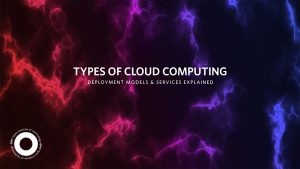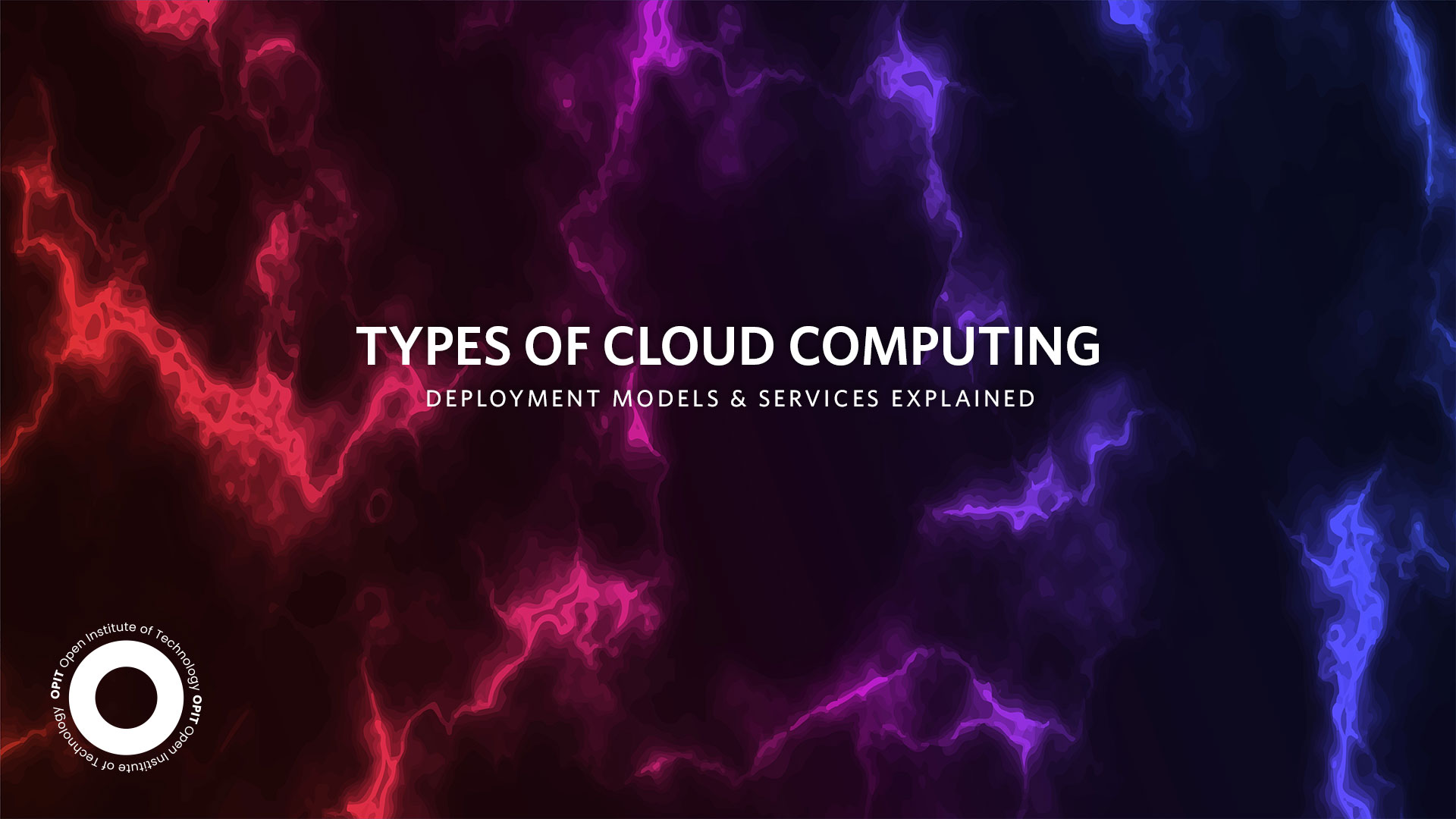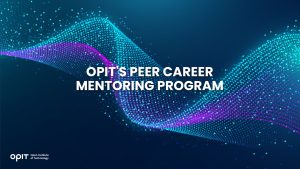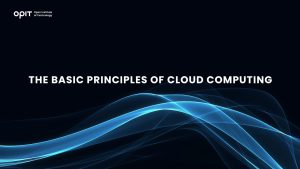

It’s hard to find a person who uses the internet but doesn’t enjoy at least one cloud computing service. “Cloud computing” sounds complex, but it’s actually all around you. The term encompasses every tool, app, and service that’s delivered via the internet.
The two popular examples are Dropbox and Google Drive. These cloud-based storage spaces allow you to keep your files at arm’s reach and access them in a few clicks. Zoom is also a cloud-based service – it makes communication a breeze.
Cloud computing can be classified into four types: public, private, hybrid, and community. These four types belong to one of the three cloud computing service models: infrastructure as a service, platform as a service, or software as a service.
It’s time to don a detective cap and explore the mystery hidden behind cloud computing.
Cloud Computing Deployment Models
- Public cloud
- Private cloud
- Hybrid cloud
- Community cloud
Public Cloud
The “public” in public cloud means anyone who wants to use that service can get it. Public clouds are easy to access and usually have a “general” purpose many can benefit from.
It’s important to mention that with public clouds, the infrastructure is owned by the service provider, not by consumers. This means you can’t “purchase” a public cloud service forever.
Advantages of Public Cloud
- Cost-effectiveness – Some public clouds are free. Those that aren’t free typically have a reasonable fee.
- Scalability – Public clouds are accommodating to changing demands. Depending on the cloud’s nature, you can easily add or remove users, upgrade plans, or manipulate storage space.
- Flexibility – Public clouds are suitable for many things, from storing a few files temporarily to backing up an entire company’s records.
Disadvantages of Public Cloud
- Security concerns – Since anyone can access public clouds, you can’t be sure your data is 100% safe.
- Limited customization – While public clouds offer many options, they don’t really allow you to tailor the environment to match your preferences. They’re made to suit broad masses, not particular individuals.
Examples of Public Cloud Providers
- Amazon Web Services (AWS)
- Microsoft Azure
- Google Cloud Platform
Private Cloud
If you’re looking for the complete opposite of public clouds, you’ve found it. Private clouds aren’t designed to fit general criteria. Instead, they’re made to please a single user. Some of the perks private clouds offer are exclusive access, exceptional security, and unmatched customization.
A private cloud is like a single-tenant building. The tenant owns the building and has complete control to do whatever they want. They can tear down walls, drill holes to hang pictures, paint the rooms, install tiles, and get new furniture. When needs change, the tenant can redecorate, no questions asked.
Advantages of Private Cloud
- Enhanced security – The company’s IT department oversees private clouds. They’re usually protected by powerful firewalls and protocols that minimize the risk of information breaches.
- Greater control and customization – Since private clouds are one-on-one environments, you can match them to your needs.
- Improved performance – Private clouds can have functions that suit your organization to the letter, resulting in high performance.
Disadvantages of Private Cloud
- Higher costs – The exclusive access and customization come at a cost (literally).
- Limited scalability – You can scale private clouds, but only up to a certain point.
Examples of Private Cloud Providers
- VMware
- IBM Cloud
- Dell EMC
Hybrid Cloud
Public and private clouds have a few important drawbacks that may be deal-breakers for some people. You may want to use public clouds but aren’t ready to compromise on security. On the other hand, you may want the perks that come with private clouds but aren’t happy with limited scalability.
That’s when hybrid clouds come into play because they let you get the best of both worlds. They’re the perfect mix of public and private clouds and offer their best features. You can get the affordability of public clouds and the security of private clouds.
Advantages of Hybrid Cloud
- Flexibility and scalability – Hybrid clouds are personalized environments, meaning you can adjust them to meet your specific needs. If your needs change, hybrid clouds can keep up.
- Security and compliance – You don’t have to worry about data breaches or intruders with hybrid clouds. They use state-of-the-art measures to guarantee safety, privacy, and security.
- Cost optimization – Hybrid clouds are much more affordable than private ones. You’ll need to pay extra only if you want special features.
Disadvantages of Hybrid Cloud
- Complexity in management – Since they combine public and private clouds, hybrid clouds are complex systems that aren’t really easy to manage.
- Potential security risks – Hybrid clouds aren’t as secure as private clouds.
Examples of Hybrid Cloud Providers
- Microsoft Azure Stack
- AWS Outputs
- Google Anthos
Community Cloud
Community clouds are shared by more than one organization. The organizations themselves manage them or a third party. In terms of security, community clouds fall somewhere between private and public clouds. The same goes for their price.
Advantages of Community Cloud
- Shared resources and costs – A community cloud is like a common virtual space for several organizations. By sharing the space, the organizations also share costs and resources.
- Enhanced security and compliance – Community clouds are more secure than public clouds.
- Collaboration opportunities – Cloud sharing often encourages organizations to collaborate on different projects.
Disadvantages of Community Cloud
- Limited scalability – Community clouds are scalable, but only to a certain point.
- Dependency on other organizations – As much as sharing a cloud with another organization(s) sounds exciting (and cost-effective), it means you’ll depend on them.
Examples of Community Cloud Providers
- Salesforce Community Cloud
- Rackspace
- IBM Cloud for Government
Cloud Computing Service Models
There are three types of cloud computing service models:
- Infrastructure as a Service (IaaS)
- Platform as a Service (PaaS)
- Software as a Service (SaaS)
IaaS
IaaS is a type of pay-as-you-go, third-party service. In this case, the provider gives you an opportunity to enjoy infrastructure services for your networking equipment, databases, devices, etc. You can get services like virtualization and storage and build a strong IT platform with exceptional security.
IaaS models give you the flexibility to create an environment that suits your organization. Plus, they allow remote access and cost-effectiveness.
What about their drawbacks? The biggest issue could be security, especially in multi-tenant ecosystems. You can mitigate security risks by opting for a reputable provider like AWS or Microsoft (Azure).
PaaS
Here, the provider doesn’t deliver the entire infrastructure to a user. Instead, it hosts software and hardware on its own infrastructure, delivering only the “finished product.” The user enjoys this through a platform, which can exist in the form of a solution stack, integrated solution, or an internet-dependent service.
Programmers and developers are among the biggest fans of PaaS. This service model enables them to work on apps and programs without dealing with maintaining complex infrastructures. An important advantage of PaaS is accessibility – users can enjoy it through their web browser.
As far as disadvantages go, the lack of customizability may be a big one. Since you don’t have control over the infrastructure, you can’t really make adjustments to suit your needs. Another potential drawback is that PaaS depends on the provider, so if they’re experiencing problems, you could too.
Some examples of PaaS are Heroku and AWS Elastic Beanstalk.
SaaS
Last but not least is SaaS. Thanks to this computing service model, users can access different software apps using the internet. SaaS is the holy grail for small businesses that don’t have the budget, bandwidth, workforce, or will to install and maintain software. Instead, they leave this work to the providers and enjoy only the “fun” parts.
The biggest advantage of SaaS is that it allows easy access to apps from anywhere. You’ll have no trouble using SaaS as long as you have internet. Plus, it saves a lot of money and time.
Nothing’s perfect, and SaaS is no exception. If you want to use SaaS without interruptions, you need to have a stable internet connection. Plus, with SaaS, you don’t have as much control over the software’s performance and security. Therefore, you need to decide on your priorities. SaaS may not be the best option if you want a highly-customizable environment with exceptional security.
The most popular examples of SaaS are Dropbox, Google Apps, and Salesforce.
Sit on the Right Cloud
Are high security and appealing customization features your priority? Or are you on the hunt for a cost-effective solution? Your answers can indicate which cloud deployment model you should choose.
It’s important to understand that models are not divided into “good” and “bad.” Each has unique characteristics that can be beneficial and detrimental at the same time. If you don’t know how to employ a particular model, you won’t be able to reap its benefits.
Related posts

Source:
- Raconteur, published on November 06th, 2025
Many firms have conducted successful Artificial Intelligence (AI) pilot projects, but scaling them across departments and workflows remains a challenge. Inference costs, data silos, talent gaps and poor alignment with business strategy are just some of the issues that leave organisations trapped in pilot purgatory. This inability to scale successful experiments means AI’s potential for improving enterprise efficiency, decision-making and innovation isn’t fully realised. So what’s the solution?
Although it’s not a magic bullet, an AI operating model is really the foundation for scaling pilot projects up to enterprise-wide deployments. Essentially it’s a structured framework that defines how the organisation develops, deploys and governs AI. By bringing together infrastructure, data, people, and governance in a flexible and secure way, it ensures that AI delivers value at scale while remaining ethical and compliant.
“A successful AI proof-of-concept is like building a single race car that can go fast,” says Professor Yu Xiong, chair of business analytics at the UK-based Surrey Business School. “An efficient AI technology operations model, however, is the entire system – the processes, tools, and team structures – for continuously manufacturing, maintaining, and safely operating an entire fleet of cars.”
But while the importance of this framework is clear, how should enterprises establish and embed it?
“It begins with a clear strategy that defines objectives, desired outcomes, and measurable success criteria, such as model performance, bias detection, and regulatory compliance metrics,” says Professor Azadeh Haratiannezhadi, co-founder of generative AI company Taktify and professor of generative AI in cybersecurity at OPIT – the Open Institute of Technology.
Platforms, tools and MLOps pipelines that enable models to be deployed, monitored and scaled in a safe and efficient way are also essential in practical terms.
“Tools and infrastructure must also be selected with transparency, cost, and governance in mind,” says Efrain Ruh, continental chief technology officer for Europe at Digitate. “Crucially, organisations need to continuously monitor the evolving AI landscape and adapt their models to new capabilities and market offerings.”
An open approach
The most effective AI operating models are also founded on openness, interoperability and modularity. Open source platforms and tools provide greater control over data, deployment environments and costs, for example. These characteristics can help enterprises to avoid vendor lock-in, successfully align AI to business culture and values, and embed it safely into cross-department workflows.
“Modularity and platformisation…avoids building isolated ‘silos’ for each project,” explains professor Xiong. “Instead, it provides a shared, reusable ‘AI platform’ that integrates toolchains for data preparation, model training, deployment, monitoring, and retraining. This drastically improves efficiency and reduces the cost of redundant work.”
A strong data strategy is equally vital for ensuring high-quality performance and reducing bias. Ideally, the AI operating model should be cloud and LLM agnostic too.
“This allows organisations to coordinate and orchestrate AI agents from various sources, whether that’s internal or 3rd party,” says Babak Hodjat, global chief technology officer of AI at Cognizant. “The interoperability also means businesses can adopt an agile iterative process for AI projects that is guided by measuring efficiency, productivity, and quality gains, while guaranteeing trust and safety are built into all elements of design and implementation.”
A robust AI operating model should feature clear objectives for compliance, security and data privacy, as well as accountability structures. Richard Corbridge, chief information officer of Segro, advises organisations to: “Start small with well-scoped pilots that solve real pain points, then bake in repeatable patterns, data contracts, test harnesses, explainability checks and rollback plans, so learning can be scaled without multiplying risk. If you don’t codify how models are approved, deployed, monitored and retired, you won’t get past pilot purgatory.”
Of course, technology alone can’t drive successful AI adoption at scale: the right skills and culture are also essential for embedding AI across the enterprise.
“Multidisciplinary teams that combine technical expertise in AI, security, and governance with deep business knowledge create a foundation for sustainable adoption,” says Professor Haratiannezhadi. “Ongoing training ensures staff acquire advanced AI skills while understanding associated risks and responsibilities.”
Ultimately, an AI operating model is the playbook that enables an enterprise to use AI responsibly and effectively at scale. By drawing together governance, technological infrastructure, cultural change and open collaboration, it supports the shift from isolated experiments to the kind of sustainable AI capability that can drive competitive advantage.
In other words, it’s the foundation for turning ambition into reality, and finally escaping pilot purgatory for good.

The Open Institute of Technology (OPIT) is the perfect place for those looking to master the core skills and gain the fundamental knowledge they need to enter the exciting and dynamic environment of the tech industry. While OPIT’s various degrees and courses unlock the doors to numerous careers, students may not know exactly which line of work they wish to enter, or how, exactly, to take the next steps.
That’s why, as well as providing exceptional online education in fields like Responsible AI, Computer Science, and Digital Business, OPIT also offers an array of career-related services, like the Peer Career Mentoring Program. Designed to provide the expert advice and support students need, this program helps students and alumni gain inspiration and insight to map out their future careers.
Introducing the OPIT Peer Career Mentoring Program
As the name implies, OPIT’s Peer Career Mentoring Program is about connecting students and alumni with experienced peers to provide insights, guidance, and mentorship and support their next steps on both a personal and professional level.
It provides a highly supportive and empowering space in which current and former learners can receive career-related advice and guidance, harnessing the rich and varied experiences of the OPIT community to accelerate growth and development.
Meet the Mentors
Plenty of experienced, expert mentors have already signed up to play their part in the Peer Career Mentoring Program at OPIT. They include managers, analysts, researchers, and more, all ready and eager to share the benefits of their experience and their unique perspectives on the tech industry, careers in tech, and the educational experience at OPIT.
Examples include:
- Marco Lorenzi: Having graduated from the MSc in Applied Data Science and AI program at OPIT, Marco has since progressed to a role as a Prompt Engineer at RWS Group and is passionate about supporting younger learners as they take their first steps into the workforce or seek career evolution.
- Antonio Amendolagine: Antonio graduated from the OPIT MSc in Applied Data Science and AI and currently works as a Product Marketing and CRM Manager with MER MEC SpA, focusing on international B2B businesses. Like other mentors in the program, he enjoys helping students feel more confident about achieving their future aims.
- Asya Mantovani: Asya took the MSc in Responsible AI program at OPIT before taking the next steps in her career as a Software Engineer with Accenture, one of the largest IT companies in the world, and a trusted partner of the institute. With a firm belief in knowledge-sharing and mutual support, she’s eager to help students progress and succeed.
The Value of the Peer Mentoring Program
The OPIT Peer Career Mentoring Program is an invaluable source of support, inspiration, motivation, and guidance for the many students and graduates of OPIT who feel the need for a helping hand or guiding light to help them find the way or make the right decisions moving forward. It’s a program built around the sharing of wisdom, skills, and insights, designed to empower all who take part.
Every student is different. Some have very clear, fixed, and firm objectives in mind for their futures. Others may have a slightly more vague outline of where they want to go and what they want to do. Others live more in the moment, focusing purely on the here and now, but not thinking too far ahead. All of these different types of people may need guidance and support from time to time, and peer mentoring provides that.
This program is also just one of many ways in which OPIT bridges the gaps between learners around the world, creating a whole community of students and educators, linked together by their shared passions for technology and development. So, even though you may study remotely at OPIT, you never need to feel alone or isolated from your peers.
Additional Career Services Offered by OPIT
The Peer Career Mentoring Program is just one part of the larger array of career services that students enjoy at the Open Institute of Technology.
- Career Coaching and Support: Students can schedule one-to-one sessions with the institute’s experts to receive insightful feedback, flexibly customized to their exact needs and situation. They can request resume audits, hone their interview skills, and develop action plans for the future, all with the help of experienced, expert coaches.
- Resource Hub: Maybe you need help differentiating between various career paths, or seeing where your degree might take you. Or you need a bit of assistance in handling the challenges of the job-hunting process. Either way, the OPIT Resource Hub contains the in-depth guides you need to get ahead and gain practical skills to confidently move forward.
- Career Events: Regularly, OPIT hosts online career event sessions with industry experts and leaders as guest speakers about the topics that most interest today’s tech students and graduates. You can join workshops to sharpen your skills and become a better prospect in the job market, or just listen to the lessons and insights of the pros.
- Internship Opportunities: There are few better ways to begin your professional journey than an internship at a top-tier company. OPIT unlocks the doors to numerous internship roles with trusted institute partners, as well as additional professional and project opportunities where you can get hands-on work experience at a high level.
In addition to the above, OPIT also teams up with an array of leading organizations around the world, including some of the biggest names, including AWS, Accenture, and Hype. Through this network of trust, OPIT facilitates students’ steps into the world of work.
Start Your Study Journey Today
As well as the Peer Career Mentoring Program, OPIT provides numerous other exciting advantages for those who enroll, including progressive assessments, round-the-clock support, affordable rates, and a team of international professors from top universities with real-world experience in technology. In short, it’s the perfect place to push forward and get the knowledge you need to succeed.
So, if you’re eager to become a tech leader of tomorrow, learn more about OPIT today.
Have questions?
Visit our FAQ page or get in touch with us!
Write us at +39 335 576 0263
Get in touch at hello@opit.com
Talk to one of our Study Advisors
We are international
We can speak in:

